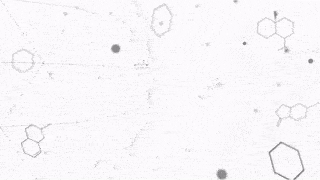Health & Rehabilitation
3 Month Yoga & Breathing Program Increases GABA Levels and Mood in Depressed Participants
Breathing, body and mind exercises have been increasingly recognized for its potential to support individuals dealing with depression.Studies show that consistent practice of the former results in an increase in GABA levels, an inhibitory neurotransmitter that reduces the activity of neurons and helps regulate overstimulation of the brain and nerve cells.This is a great development, considering that mental health is rapidly becoming one of the biggest global health challenges of the decade.It validates our hard work and validity of our program, such as the PTSD LIberation Program, designed to relief depression and anxiety among people with this challengeA recent study titled “Thalamic Gamma Aminobutyric Acid Level Changes in Major Depressive Disorder After a 12-Week Iyengar Yoga and Coherent Breathing Intervention” sheds light on the positive effects of Iyengar yoga sessions on mental health.Iyengar Yoga is a style of yoga that was developed by B.K.S. Iyengar and places emphasis on proper alignment and the use of props to support the body in various postures. The style shares various exercises, such as Ujjayi Breathing (Victorious Breath), Kapalbhati (Shining Skull Breathing) and Nadi Shodhan (Alternate Nostril Breathing) with the Breatheology method.The study investigated the effects of a 12-week Iyengar yoga and coherent breathing intervention on thalamic gamma aminobutyric acid (GABA) levels in individuals with Major Depressive Disorder (MDD).Previous studies have demonstrated the positive physical and psychological benefits of yoga, including its potential therapeutic effects on MDD. Traditional antidepressant medications targeting the monoamine system have limitations in explaining the neurobiological mechanisms underlying MDD.The study aimed to track changes in GABA levels in individuals with MDD through a Yogic Intervention (YI) based on the Iyengar yoga tradition. The results of the study indicate that YI can influence GABA levels by stimulating the parasympathetic response.You can read the full study here
What is GABA?
 Gamma-aminobutyric acid, commonly known as GABA, is a neurotransmitter in the central nervous system (CNS) of mammals, including humans. Neurotransmitters are chemical messengers that transmit signals between nerve cells, or neurons, in the brain.GABA is an inhibitory neurotransmitter, meaning it reduces the activity of neurons and helps regulate brain and nerve cell excitability. Its primary function is to inhibit or calm down the activity of neurons, preventing them from firing excessively and creating a state of overexcitation in the brain.GABA plays a crucial role in maintaining a balance between excitation and inhibition in the brain.It helps regulate various physiological and psychological processes, including:
Gamma-aminobutyric acid, commonly known as GABA, is a neurotransmitter in the central nervous system (CNS) of mammals, including humans. Neurotransmitters are chemical messengers that transmit signals between nerve cells, or neurons, in the brain.GABA is an inhibitory neurotransmitter, meaning it reduces the activity of neurons and helps regulate brain and nerve cell excitability. Its primary function is to inhibit or calm down the activity of neurons, preventing them from firing excessively and creating a state of overexcitation in the brain.GABA plays a crucial role in maintaining a balance between excitation and inhibition in the brain.It helps regulate various physiological and psychological processes, including:- Anxiety and Stress: GABA helps counteract anxiety and stress by reducing the excitability of neurons in brain regions associated with fear and anxiety responses.
- Sleep Regulation: GABA promotes relaxation and aids in the induction of sleep. Many sleep medications and tranquilizers target GABA receptors to produce sedative effects.
- Motor Control: GABA is involved in controlling motor functions, including muscle tone and movement. It helps prevent excessive muscle contractions and involuntary movements.
- Mood Regulation: GABA influences mood and emotional states. Low levels of GABA have been associated with conditions like depression and anxiety disorders.
- Seizure Prevention: GABA inhibits the excessive firing of neurons, which can lead to seizures. Deficiencies in GABA function can increase the risk of seizures and epileptic disorders.
- Pain Perception: GABA receptors are found in regions of the brain involved in pain processing. GABAergic drugs may have analgesic properties and can modulate pain perception.
Diving deeper into the study
The participants were randomly assigned to a high dose group (HDG) or a low dose group (LDG) for the 12-week intervention. The HDG received three 90-minute yoga sessions and four 30-minute homework sessions per week, while the LDG received two 90-minute yoga sessions and three 30-minute homework sessions per week. The inclusion criteria for participants were age (18 to 55 years old), current diagnosis of MDD, and a Beck Depression Inventory II (BDI-II) score ranging from 14 to 28 (indicating moderate level of depression). The upper age limit was later shifted to 65 to achieve the required recruitment.The 90-minute yoga protocol consisted of 60 minutes of Iyengar yoga, 10 minutes of relaxation, and 20 minutes of coherent breathing exercises. Participants were also assigned 15 minutes of body postures and 15 minutes of breathing practices as homework assignments. Magnetic Resonance Imaging (MRI) and proton (1H) MRS scans were conducted using a volumetric head coil. Difference-edited GABA-optimized spectra were obtained through MEGAPRESS. The spectra were analyzed using LC Model to measure GABA levels and other relevant neurochemicals.A total of 30 participants completed the 12-week intervention (15 in HDG and 15 in LDG), and 28 participants completed the second scanning session (13 in HDG and 15 in LDG). There were no significant differences in tissue segmentation data across the scanning sessions, confirming the reproducibility of the voxel placement algorithm.The study found that while the total group did not exhibit a significant correlation between BDI-II scores and GABA levels, the HDG showed a significant relation between BDI-II scores and changes in GABA levels. This finding is consistent with the GABA deficit hypothesis of depression, suggesting that yoga and coherent breathing practices can increase GABA levels, potentially affecting mood changes. The study suggests that regular yoga practice, at least once a week, may help maintain GABA levels.Conclusion
In conclusion, the practice of breathwork not only brings about numerous physical health benefits but also holds great potential in improving mental health (including stress & anxiety relief). The integration of pranayama, a fundamental aspect of yoga, has been shown to have a positive impact on mental well-being. By regulating the breath, we directly influence our nervous system, promoting relaxation, reducing stress, and enhancing mental clarity.Breatheology Courses
Learn and master conscious breathing through our online learning programs. Discover how effective, simple techniques can help boost your performance, help you feel more balanced, and improve your well-being.
Free Courses
Kickstart your breathwork journey with our free, step-by-step training programs.
Level Up Your Skills
Take your breathwork to new heights with our advanced courses and feel the difference in your mind and body.
Related Articles:
- How Breathing Affects Mental Health: The Science Behind Calm
- The Power of Breathwork: Enhancing Mood and Reducing Anxiety Through Structured Breathing
- Neurotransmitters and Breathing: Balancing Serotonin, GABA, and Dopamine
- The Science of Breathing and the Nervous System: How Breathing Influences Relaxation and Alertness
- Breathing for Focus and Clarity
